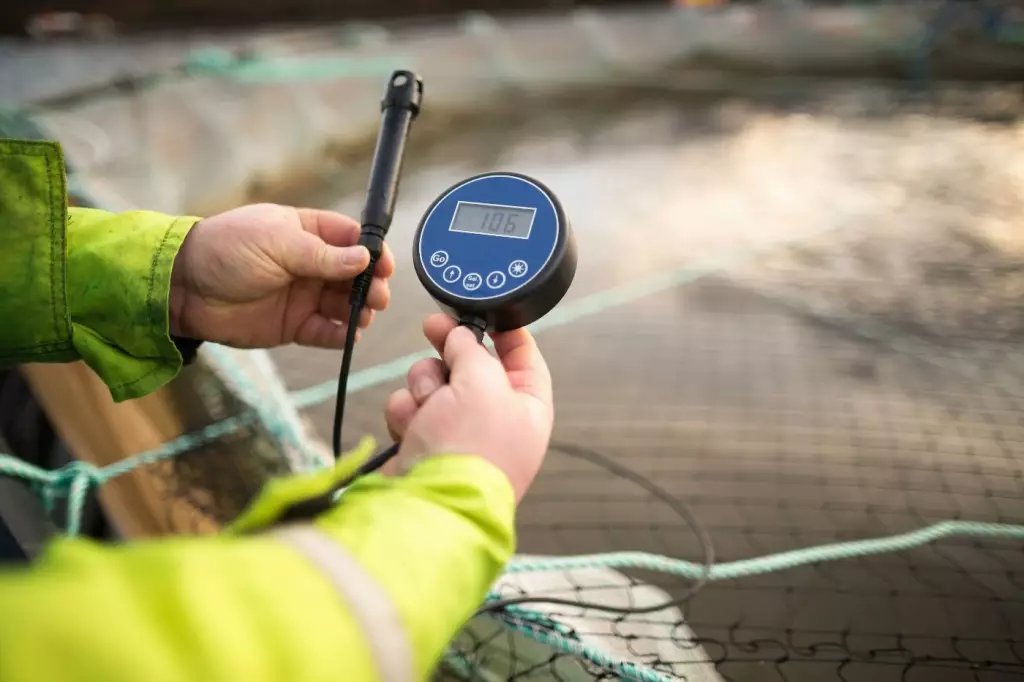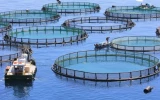Is Salmon Farming Profitable? (Cost & Profit Breakdown for 2023)
Financial projections for 2023 suggest positive trends for salmon farming, despite concerns surrounding sustainability and environmental impact. The growing demand for salmon in many parts of the world has led to increased interest in land-based salmon farming. To provide a clear picture of the potential profitability, we'll examine the current market values and operating costs for salmon farmers.
Salmon farming can be profitable. A small salmon farm would need to produce and sell at least 5,600 kilograms of salmon at a market price of $11.25 per kilogram to make a profit. The cost to set up can start at $30,000. The ongoing costs could range from $22,000 to $120,000 per year.
Salmon farmers are predicted to experience a year of profits, making it an appealing industry to consider. Norwegian land-based salmon farming company, Salmon Evolution, for example, is on track for profitable farming operations in Q2 2023.
Summary
- There's potential for profit in salmon farming, but it's essential to carefully manage costs and take advantage of market opportunities.
- To increase the profitability of salmon farming, consider adopting innovative technologies like land-based salmon farming.
- If you address different markets, such as eco-conscious and health-focused consumers, you can increase the demand for your salmon and potentially boost your farm's profitability.

On this page:
Cost Breakdown for Salmon Farming in 2023
Salmon farming can be a profitable venture if you carefully consider all costs and create a comprehensive budget to ensure the success of your business.
To start, let's break down some of the costs associated with salmon farming:
- Initial investment: Setting up a salmon farm requires significant upfront investment, including purchasing land or leasing sea pens, constructing facilities, and acquiring necessary equipment.
- Feed costs: Providing quality feed to the fish is one of the highest ongoing expenses in salmon farming.
- Labor: Running a successful operation requires hiring skilled staff. This can stimulate the local job market but also contribute to overall costs.
| Costs of Setting Up a Salmon Farm | Small Scale | Medium to Large |
|---|---|---|
| Land and sea pens | $10,000 to $100,000 | $100,000 to $1 million |
| Facilities | $10,000 to $50,000 | $100,000 to $500,000 |
| Tanks and water filtration systems | $5,000 to $50,000 | $50,000 to $500,000 |
| Equipment | $5,000 to $50,000 | $50,000 to $500,000 |
| Total Startup Costs | $30,000 to $250,000 | $300,000 to $2.5 million |
Operational costs to keep your salmon farm running
The global fish farming industry is projected to expand by almost a third by 2027, which means increased competition and possibly higher costs. It is essential to plan for expenses such as electricity, fuel, water, and maintenance. Keep track of your consumption patterns and look for ways to reduce energy use and lower costs.
| Ongoing Costs of a Salmon Farm (per year) | Small Scale | Medium to Large |
|---|---|---|
| Feed and other supplies | $10,000 to $50,000 | $50,000 to $500,000 |
| Maintenance | $1,000 to $10,000 | $10,000 to $100,000 |
| Labor | $10,000 to $50,000 | $50,000 to $500,000 |
| Permits, fees, and licenses | $1,000 to $10,000 | $10,000 to $100,000 |
| Total Operational Costs | $22,000 to $120,000 | $120,000 to $1.2 million |
Infrastructure and equipment costs include land and leasing
Setting up your salmon farm requires investments in infrastructure and equipment. This includes land or leasing expenses, constructing pens or tanks, water filtration systems, and other essential equipment like aeration and oxygenation devices.
When you create your budget for 2023, make sure to account for both initial investments and potential ongoing maintenance costs. If you are just starting out, consider choosing cost-effective equipment options or exploring affordable financing options to spread out costs.
Feed and supply costs for your salmon farm

One of the most significant ongoing expenses in salmon farming is feed and supplies. It is crucial to provide your salmon with a balanced and nutritious diet to ensure optimal growth and health. The price of feed may fluctuate in 2023 due to global market conditions, so allocate a flexible budget for this expense. In addition to feed, you'll need to budget for supplies such as antibiotics, vitamins, and chemicals for water treatment.
Labor costs for a skilled workforce
Salmon farming can be labor-intensive, and it is critical to have a skilled workforce available to manage daily operations such as feeding, maintenance, and monitoring water quality. Factor in labor costs for 2023 by considering current market wages, working hours, and any additional staff training requirements. Make sure to comply with local labor laws and regulations to avoid potential fines or workers' compensation issues.
Permit and licensing costs to run a salmon farm
Before starting a salmon farming operation, you'll need to acquire permits and licenses from relevant authorities. The cost of these permits and licenses can vary depending on your location and the size of your operation. Research the necessary permits and fees for your area and plan for this expense in your 2023 budget. Keep in mind that some permits require renewal on an annual basis, so make sure to factor in renewal costs as well.
Make a Profit from Salmon Farming
Now, let's discuss potential sources of profit in salmon farming:
- Demand for salmon: As mentioned earlier, the demand for salmon is on the rise, which can lead to higher prices. For example, Atlantic Sapphire's land-farmed salmon fillets sold for $12 per kg in the US.
- Market differentiation: Some companies, like Atlantic Sapphire, have successfully differentiated themselves with a unique "Bluehouse" brand, commanding higher prices.
The market price for salmon in March 2023 is $11.25 per kg, according to YCharts Inc. To calculate the breakeven point for a small salmon farm, we need to know the total cost of production per kilogram of salmon. Let's assume that the total cost of production for a kilogram of salmon is $9.00.

To calculate the breakeven point, we can use the following formula:
Breakeven point = Total fixed costs / (Price per unit - Variable costs per unit)
In this case, the fixed costs would include the costs of land, sea pens, facilities, equipment, and other fixed costs associated with setting up and running the farm. Let's assume that the total fixed costs are $50,000.
The variable costs per unit would include the costs of feed, labor, water, electricity, and other variable costs associated with producing one kilogram of salmon. Let's assume that the variable costs per unit are $2.25.
Using the formula above, we can calculate the breakeven point as follows:
Breakeven point = $50,000 / ($11.25 - $2.25) = $50,000 / $9.00
Breakeven point = 5,555.56 kilograms of salmon
Therefore, the salmon farm would need to produce and sell at least 5,555.56 kilograms of salmon at a market price of $11.25 per kilogram to break even and cover all of its costs.
Market price trends of salmon
In 2023, the salmon farming market is expected to experience significant growth. The Salmon Farming Market evaluation projects increases in market value between 2023 and 2031. As someone investing in salmon farming, you will want to keep an eye on how these market trends affect the profitability of your business.
Global demand for salmon remains strong
The global demand for salmon continues to rise due to the popularity of this protein-rich, healthy food source. With an increasing requirement for high-quality seafood, you can expect the demand for farmed salmon to remain strong in 2023. Companies like Salmon Evolution project profitability in their farming operations starting in Q2 2023, which implies a positive outlook for the industry.
Sustainability and environmental factors of salmon farming
As a salmon farmer, you should prioritize sustainability and consider the environmental factors influencing the industry. Sustainable practices help maintain a balance between meeting global demand and preserving the natural resources necessary for salmon farming.
Here are a few essential factors to consider during your farming operations:
- Utilize technology to monitor and control water quality
- Implement ecologically responsible feeding practices
- Prevent and control the spread of diseases and parasites
- Follow regulations to ensure the welfare of your salmon during breeding, growth, and harvest.
Ways to Increase Profitability of Salmon Farms

Implement innovative technologies
One example would be land-based salmon farming. It can become more profitable with the use of aquaponics, as it can serve as a catalyst to bring sustainable salmon production out of net pens and into land-based RAS (Recirculating Aquaculture Systems) facilities. If you use such methods, you can optimize the efficiency and productivity of your farm.
Focus on sustainability when farming salmon
Practices that reduce waste, recycle water, and promote a healthy ecosystem can create a more sustainable operation, which may (over time) result in lower production costs and have a positive impact on consumer perception. By adopting best practices in environmental management, you can reduce costs, increase efficiency, and minimize the ecological impact of your farm.
Exploring different markets for salmon
Lastly, exploring different markets can help increase the profitability of your salmon farming business. To achieve this, consider diversifying your product offerings and tapping into new markets, such as:
- Gourmet food stores and restaurants that are looking for high-quality, sustainably sourced salmon
- Markets that value traceability and transparency related to the production process and supply chain
- Eco-conscious and health-focused consumers who are willing to pay a premium for sustainably produced salmon



